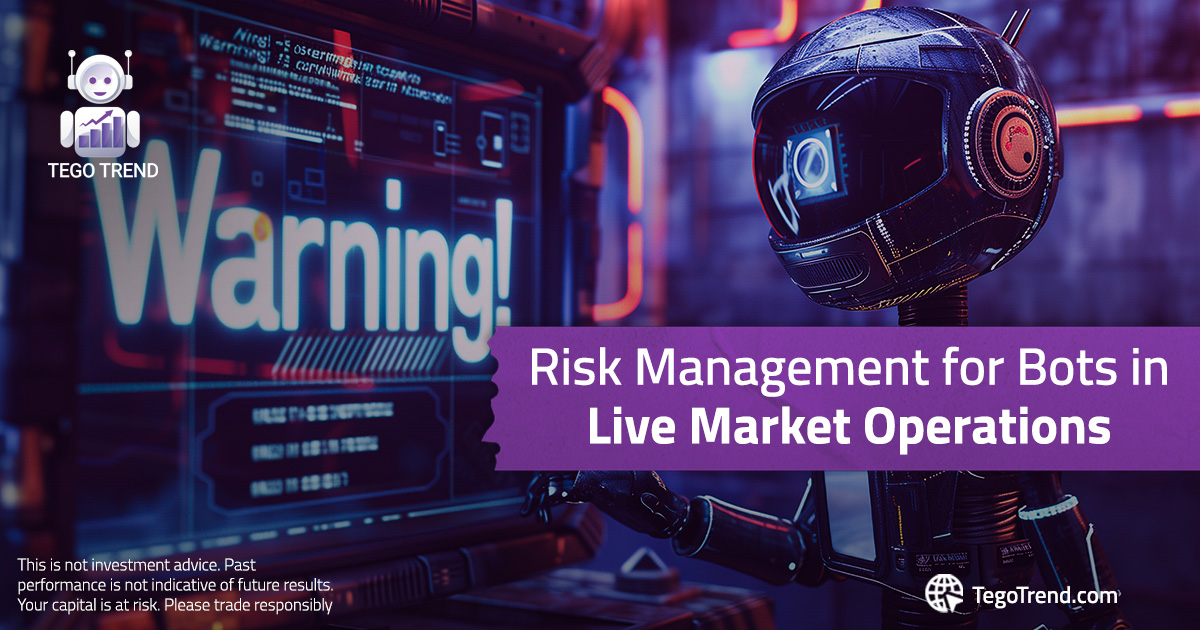Risk Management When Running Bots in Live Markets
Introduction
With the development of trading technologies and the increasing reliance on bots to execute trades automatically, it has become necessary for traders not to focus solely on profits, but to give top priority to risk management. Running a bot without a clear risk management strategy can lead to severe losses, even if the bot’s settings are good.
This article aims to clarify the basic principles of risk management when using bots in a live market environment and to present best practices to ensure safe and efficient operation.
Why Is Risk Management Necessary with Bots?
Bots act based on pre-coded instructions, but they lack awareness or real-time risk assessment as a human trader does. During periods of volatility or when major economic news is released, bots may continue executing orders indiscriminately, exposing the account to the risk of collapse. This is why having a strict risk management system operating alongside the bot is so important.
Basic Principles of Risk Management
1. Determine the Risk Percentage Per Trade
It is recommended not to risk more than 1–2% of capital in each trade. This simple rule ensures you can stay in the market longer, even in the event of repeated losses.
2. Use Stop Loss Orders
No matter how accurate the bot’s strategy is, stop loss orders should never be removed. They are the primary defense line against unexpected market movements.
3. Set a Maximum Daily or Weekly Loss Limit
It is preferable to set the bot to stop trading if a certain daily or weekly loss limit is exceeded, to avoid losing the entire balance in a single day.
4. Diversify Pairs or Financial Instruments
Running the bot on more than one pair or asset reduces reliance on a single instrument and limits the risk from sudden moves in a specific asset.
5. Adjust Lot Size According to Account Size
Using a lot size disproportionate to the capital exposes the account to rapid danger if the market reverses. Lot size should be calculated precisely based on capital management rules.
6. Control Frequency and Number of Open Trades
Opening a large number of trades simultaneously (automatically) may drain the available margin. Therefore, it is advised to set a maximum number of trades allowed in the bot’s settings.
7. Test the Bot on a Demo or Cent Account First
Before running the bot on a real account, it is better to test it for a sufficient period on a demo or cent account to observe its performance and behavior in real market conditions.
Helpful Tools for Risk Management
Risk management settings within the bot itself (such as automatic stop loss, maximum open trades).
External platforms like Myfxbook to monitor performance and control risk based on live analytics.
Using a VPS (Virtual Private Server) to ensure the bot operates stably without interruptions, especially in cases of local internet outages.
Monitoring and alert software that sends notifications when certain risk levels are reached.
Practical Tips for Bot Traders
Do not trust the bot blindly; consider it an automated assistant that still requires oversight.
Continuously update risk settings based on market performance and the bot’s results.
Keep a record of all adjustments you make, and compare results regularly.
Review the bot’s performance after each week or specified period to assess its adherence to set limits.
Avoid using the bot during major news events unless the strategy is specifically designed for that.
Conclusion
Risk management is not merely an option when using bots in trading; it is an integral part of any successful trading plan. A good bot without risk management can turn into a destructive tool, while an average-performing bot can produce stable results if supported by a clear capital and risk management strategy.
Therefore, if you want to truly benefit from the power of automated trading, always start with a foundation of risk management.


